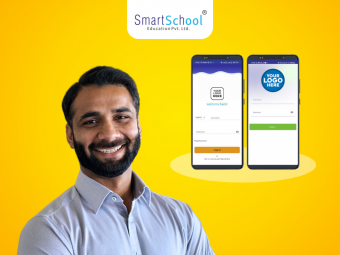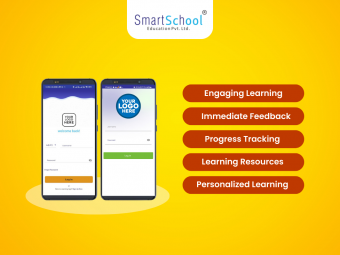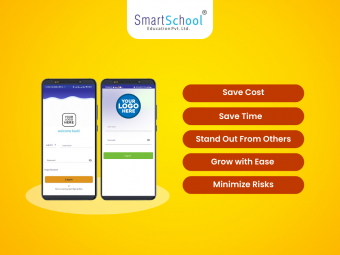The integration of technology in education has transformed the way students learn and teachers instruct. Educational technology, or edtech, plays a crucial role in enhancing classroom experiences and expanding learning opportunities. If you're considering developing an edtech app specifically for K-12 education, there are several key steps you should follow to ensure its success.
10 Step To Create An Edtech App For K-12 Students
In this guide, we will outline a detailed step-by-step process for creating an edtech app tailored to K-12 students.
Step 1: Define the App's Purpose and Objectives:
Clearly define the purpose and objectives of your edtech app for K-12. Identify the specific educational needs it aims to address and the goals it seeks to achieve. Consider aspects such as improving student engagement, facilitating personalized learning, or enhancing collaboration between teachers and students.
Step 2: Conduct Market Research:
Thoroughly research the edtech market, specifically focusing on K-12 education. Identify existing apps and solutions, analyze their strengths and weaknesses, and determine the gaps that your app can fill. Understand your target audience's preferences, pain points, and requirements to ensure your app meets their needs effectively.
Step 3: Design the User Interface and User Experience:
Create a user-friendly and visually appealing interface for your app. Keep in mind the age group and cognitive abilities of K-12 students. Design intuitive navigation, clear layouts, and interactive elements that make the app engaging and easy to use. Prioritize user experience to ensure students, teachers, and parents can navigate the app effortlessly.
Step 4: Plan App Features and Functionality:
Define the core features and functionality of your edtech app. Consider features such as interactive lessons, progress tracking, assessments, collaborative tools, multimedia integration, and communication channels. Prioritize features that align with your app's objectives and offer value to both students and teachers.
Step 5: Develop the App:
Choose a suitable platform for app development, such as iOS, Android, or web-based. Collaborate with a skilled development team or hire experienced developers to build the app. Implement robust coding practices, ensure scalability, and conduct regular testing to identify and fix any bugs or issues.
Step 6: Incorporate Personalization and Adaptive Learning:
Include personalized learning elements in your app to cater to individual student needs. Implement adaptive learning algorithms that adjust content and difficulty levels based on each student's progress and learning pace. Provide personalized recommendations and adaptive assessments to promote customized learning experiences.
Step 7: Ensure Data Security and Privacy:
Place utmost importance on data security and privacy, especially when dealing with student information. Comply with relevant data protection regulations and implement encryption, secure user authentication, and strict access controls. Conduct regular security audits and stay updated with best practices to safeguard user data.
Step 8: Test and Iterate:
Thoroughly test the app's functionality, performance, and usability across different devices and platforms. Gather feedback from teachers, students, and parents through pilot testing or beta releases. Use the feedback to make improvements, fix any issues, and enhance the overall user experience.
Step 9: Launch and Market the App:
Prepare a marketing strategy to promote your edtech app effectively. Develop a compelling website, create informative content, leverage social media platforms, and collaborate with educational influencers or institutions. Target relevant communities and engage with potential users to generate awareness and drive app downloads.
Step 10: Monitor and Update:
Monitor app performance, user engagement, and feedback continuously. Gather analytics data to understand user behavior, identify areas for improvement, and introduce updates or new features accordingly. Stay responsive to user needs and evolving educational trends to ensure the app remains relevant and impactful.
Why Build Your Own Edtech App From Scratch, When You Can Just Pick One With White-labeling?
Whitelabeling refers to the process of rebranding a product or service developed by one company and offering it to other companies under their own brand. In the context of education technology, a whitelabel education app is an application that is developed by one company but can be customized and rebranded by educational institutions or organizations to appear as if it was developed exclusively for them.
When deciding between using a white-labeling app and creating your own edtech app, there are several reasons why you might consider opting for a white-labeling solution:
1. Time and Cost Efficiency:
Developing your own edtech app from scratch can be a time-consuming and expensive process. By choosing a white-labeling app, you can leverage an existing platform that has already been developed, tested, and optimized. This saves you significant time and resources compared to building an app from the ground up.
2. Quick Time to Market:
With a white-labeling app, you can quickly launch your edtech platform and start serving your students. The development and deployment process is streamlined since the core functionalities are already built. This allows you to enter the market faster and stay ahead of competitors.
3. Established Features and Functionality:
A white-labeling app typically comes with a range of features and functionality that have been tried and tested. These features may include content management, assessment tools, communication channels, progress tracking, and more. You can leverage these pre-built features to provide a comprehensive and robust learning experience for your students.
4. Customizable Branding:
White-labeling apps offer the advantage of customization. You can brand the app with your institute's logo, colors, and overall design to create a unique and consistent user experience. This helps in building brand recognition and maintaining a cohesive identity across your edtech platform.
5. Ongoing Support and Updates:
When you opt for a white-labeling app, you typically receive ongoing support and updates from the app provider. This ensures that your edtech platform remains up-to-date, secure, and equipped with the latest features. It allows you to focus on delivering quality education rather than worrying about the technical aspects of app maintenance.
6. Scalability and Flexibility:
White-labeling apps are designed to be scalable, allowing you to grow your user base and expand your offerings without major technical hurdles. The app provider will handle the infrastructure and server-side maintenance, giving you the flexibility to focus on the growth and development of your educational content and services.
7. Industry Expertise:
White-labeling app providers often have extensive experience in the education technology industry. They understand the specific needs and challenges of the sector, and their platforms are built to address those requirements. By choosing a white-labeling solution, you can benefit from their expertise and industry insights.
While creating your own edtech app may provide complete customization and control, opting for a white-labeling app offers a cost-effective, time-efficient, and feature-rich solution. It allows you to quickly enter the market, provide a personalised learning experience, and focus on delivering quality education to your students.
Get Your Own Edtech App In Your Own Brand Name With SmartSchool’s Whitelabel Edtech App Solution
Transform your educational institute with SmartSchool’s Whitelabel Edtech App Solution, offering an interactive learning app and digital smart class content from nursery to class 12th, paired with a robust teaching app, all customized with your institute's brand name.
Accelerate student engagement and empower educators with a seamless, branded educational experience that caters to diverse learning needs.
Features Of SmartSchool’s Whitelabel Edtech App Solution
- 50k+ HD Videos - Animated and Anchor Based Videos
- 2 Million+ Learning Resources
- Huge Question Bank Of 1,00,000+ Questions
- 3,000+ Publishers Mapped For Personalized Learning
- 10,000+ Interactive Tools For Revision
- CBSE, ICSE and All Major Indian State Boards
- Bilingual Content - Both In Hindi and English
- Real-Time Tracking of Student Performance
- Monitor Progress and Content Usage Report
- Special Learning Zone for Dyslexia Students
- Real Life Videos and Science Experiments
- Easily Switch Between Offline and Online Content Mode
- Diagrams, Mapwork, History Timelines & Toppers Answers
- HOTs, Previous Year Question Papers & Formulae Master
- Change video speed, Search content and bookmark favourite videos
- Live classes, Fee Tracking, Assignments and Attendance
- WhatsApp, App notifications and Email platform
To know more, call 8927089270.
Conclusion:
Developing an edtech app for K-12 education requires careful planning, market research, and attention to user needs. By following the step-by-step process outlined in this guide, you can create a successful edtech app tailored to the unique needs of K-12 students. Leveraging whitelabeling for creating an edtech app offers numerous advantages such as faster development, cost-efficiency, and customizable branding, enabling educational institutions to provide tailored digital solutions to K-12 students.




Leave your comment